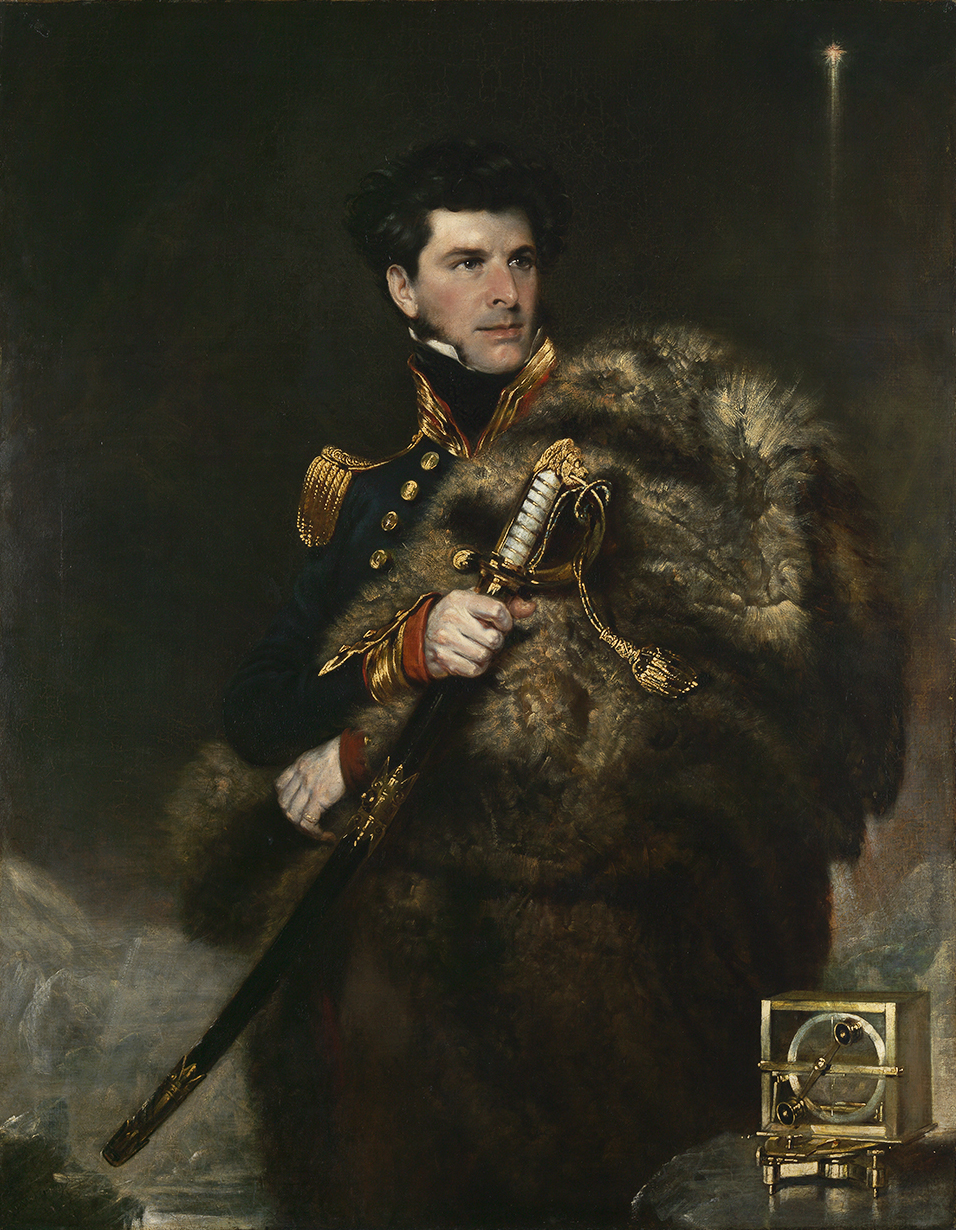Difference between revisions of "Template:POTD protected"
Westarctica (talk | contribs) |
Westarctica (talk | contribs) |
||
| Line 1: | Line 1: | ||
{| role="presentation" style="margin:0 3px 3px; width:100%; text-align:left; background-color:transparent; border-collapse: collapse; " | {| role="presentation" style="margin:0 3px 3px; width:100%; text-align:left; background-color:transparent; border-collapse: collapse; " | ||
|style="padding:0 0.9em 0 0;" | [[File: | |style="padding:0 0.9em 0 0;" | [[File:James-Clark-Ross.jpg|300px|thumb]] | ||
|style="padding:0 6px 0 0"| | |style="padding:0 6px 0 0"| | ||
'''[[James Clark Ross]]''' was a British explorer of the [[Antarctica|Antarctic]] who, between 1839 and 1843, commanded an Antarctic expedition comprising the vessels HMS ''Erebus'' and [[HMS Terror|HMS ''Terror'']]; he charted much of the coastline of the continent. Between 1839 and 1843, Ross commanded HMS ''Erebus'' on his own [[Antarctic]] expedition and charted much of the continent's coastline. Captain Francis Crozier was second-in-command of the expedition, commanding [[HMS Terror|HMS ''Terror'']]. | |||
In 1841, James Ross discovered the [[Ross Sea]], [[Victoria Land]], and the volcanoes [[Mount Erebus]] and Mount Terror, which were named for the expedition's vessels. They sailed for 250 nautical miles (460 km) along the edge of the low, flat-topped ice shelf they called variously the Barrier or the Great Ice Barrier, later named the [[Ross Ice Shelf]] in his honor. He was awarded the ''Grande Médaille d'Or des Explorations'' in 1843, knighted in 1844, and elected to the Royal Society in 1848. | |||
<p><small> | <p><small>Artist: John R. Wildman</small></p> | ||
[[:Category:Images|'''(More Images)''']] | [[:Category:Images|'''(More Images)''']] | ||
<div class="potd-recent" style="text-align:right;"> | <div class="potd-recent" style="text-align:right;"> | ||
Revision as of 16:13, 2 February 2023
|
James Clark Ross was a British explorer of the Antarctic who, between 1839 and 1843, commanded an Antarctic expedition comprising the vessels HMS Erebus and HMS Terror; he charted much of the coastline of the continent. Between 1839 and 1843, Ross commanded HMS Erebus on his own Antarctic expedition and charted much of the continent's coastline. Captain Francis Crozier was second-in-command of the expedition, commanding HMS Terror. In 1841, James Ross discovered the Ross Sea, Victoria Land, and the volcanoes Mount Erebus and Mount Terror, which were named for the expedition's vessels. They sailed for 250 nautical miles (460 km) along the edge of the low, flat-topped ice shelf they called variously the Barrier or the Great Ice Barrier, later named the Ross Ice Shelf in his honor. He was awarded the Grande Médaille d'Or des Explorations in 1843, knighted in 1844, and elected to the Royal Society in 1848. Artist: John R. Wildman |
